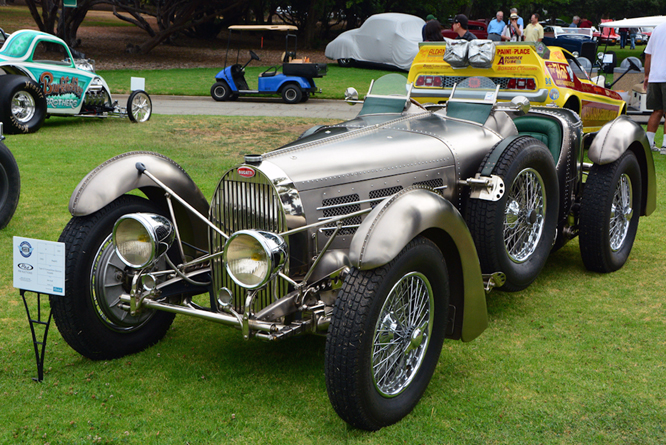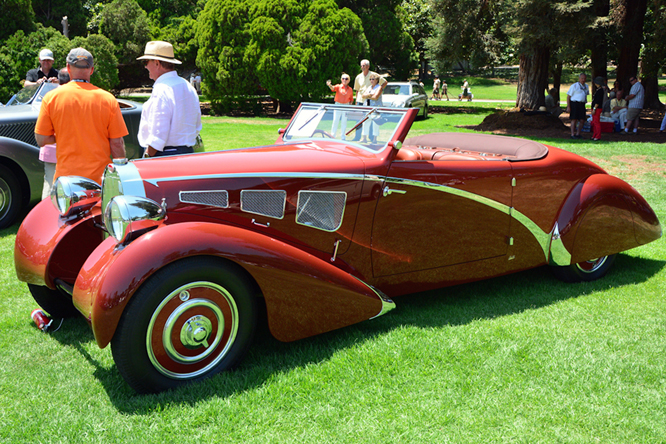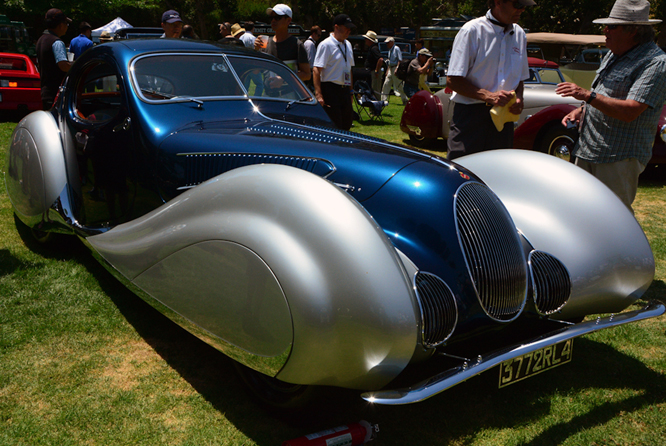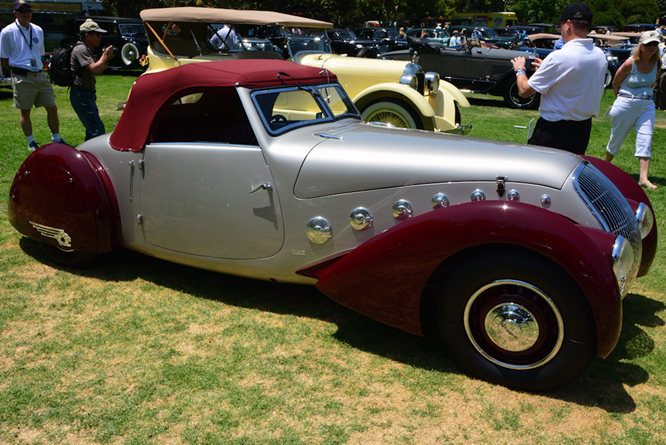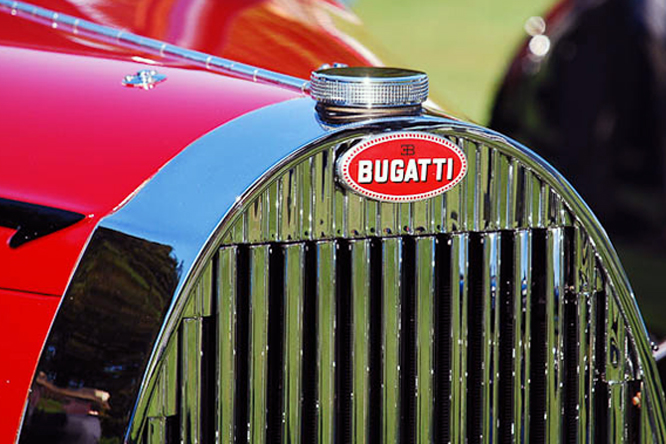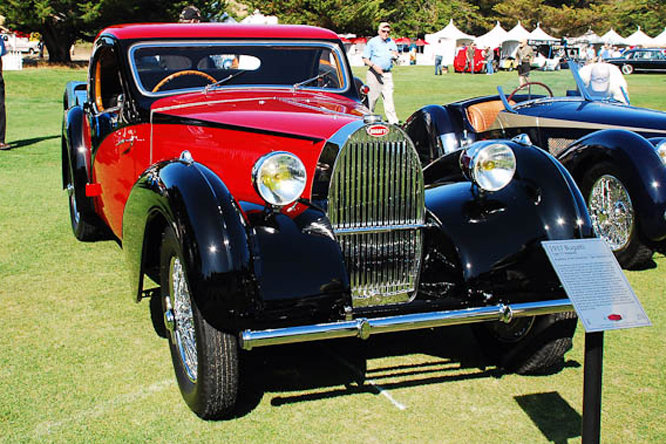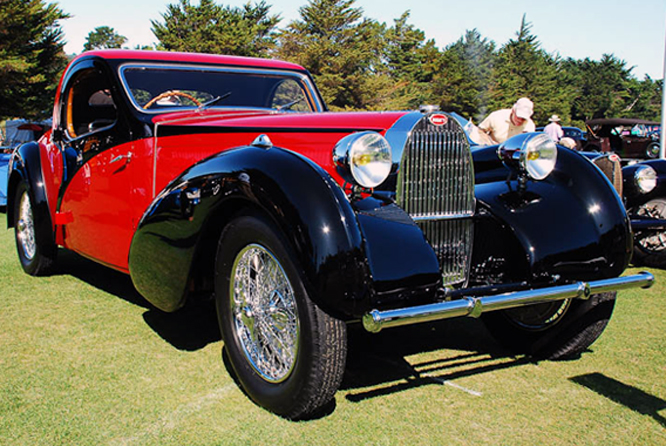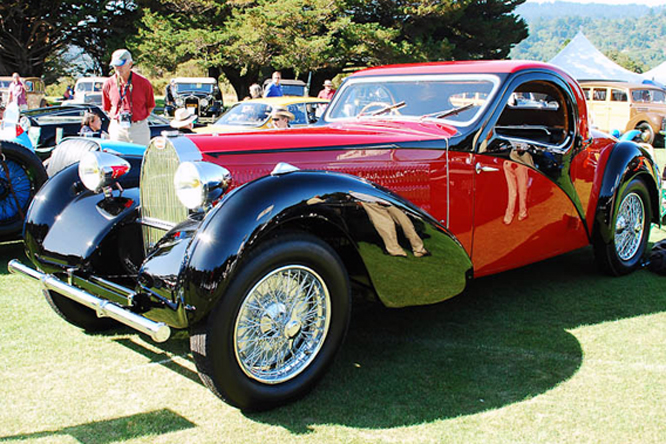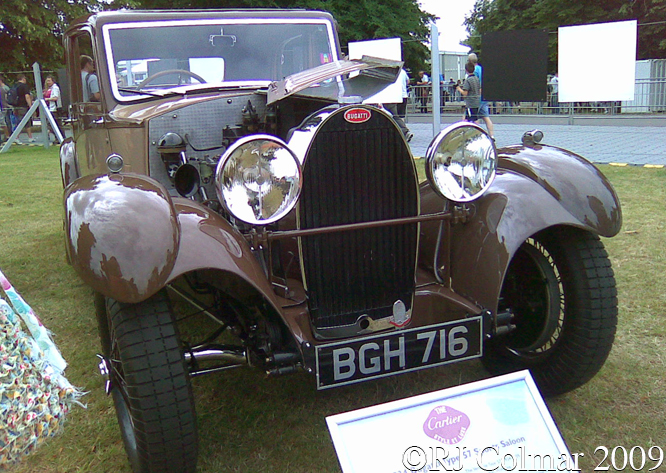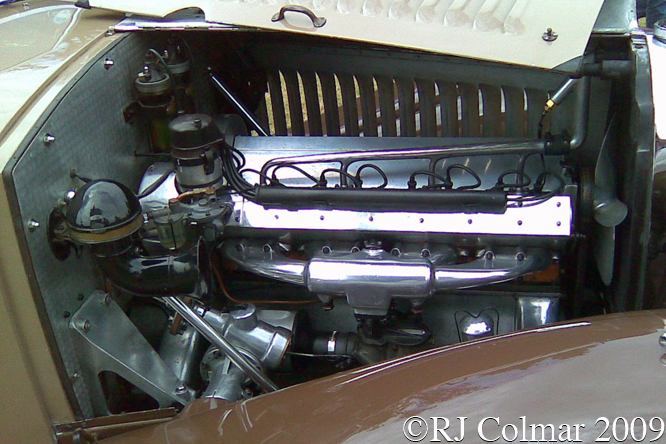The chassis for today’s featured Bugatti Type 57 #57104 was the fourth Type 57 to be built and the oldest known to have survived. In 1934 it was delivered to Bugatti’s agent in Paris Lamberjack. Somewhere around the mid to late 1940’s the car lost what is believed to have been it Van Voren body, but the chassis and major mechanical items apart from the front axle remained as a ‘flock of parts which passed through many owners including Tom Barrett, co-founder of the Barrett-Jackson auction house.
When Tom realised he needed a low slung Type 57SC chassis, on which to build a recreation of the famous Atlantique, he sold the flock of Type 57 parts along with a consignment of Bugatti Type 59 parts to David Grainger of The Guild of Automotive Restorers of Bradford north of Toronto, Ontario.
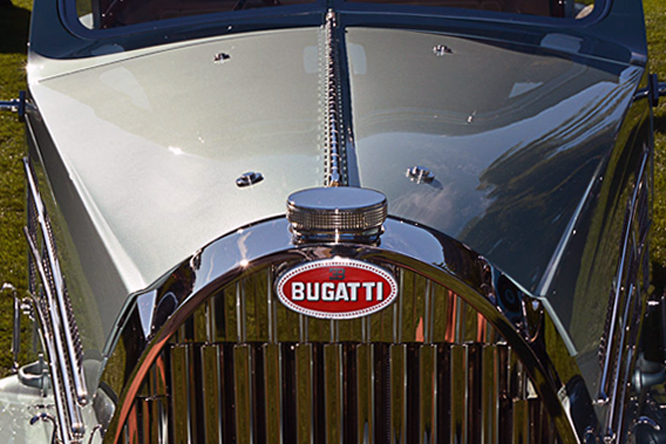
David spent 3 years restoring the Type 59 from little more than half of the original parts before turning his attention to what he might do with #57104. At some point David came across some images of Jean Bugatti’s masterpiece, the Aerolithe which featured center stage of Bugatti’s stand at the 1935 Paris Auto Show.
The Aerolithe, French for meteor, disappeared after it had been road tested by two British enthusiasts in the United Kingdom and returned to the factory in 1936. There is no documentation as to what became of the car but it is presumed to have been broken up not least because it’s body was crafted out of magnesium alloy otherwise known as Elektron a valuable material that the Germans used in the production of it’s World War Two aircraft.
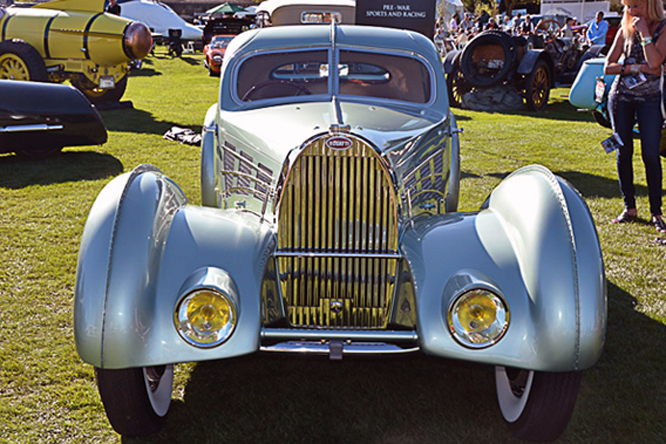
When Jean Bugatti revealed to the press that the signature riveted joins which stand proud of the compound curved body work came about as a result of the use of Elektron the car is said to have become known as the Elektron Coupé.
Once David had come to the inescapable conclusion that the Aerolithe had almost certainly built on an early Type 57 chassis because; it’s low slung variants 57 S and 57 SC were either not available in the time frame prior to the 1935 Paris Show, the bulges in the body work to accommodate the early Type 57 steering box and because there was no obvious way to mount the fuel tank and spare wheel with the later low slung type 57 chassis, he knew the body he wanted to recreate for #57104 was that of the Aerolithe.
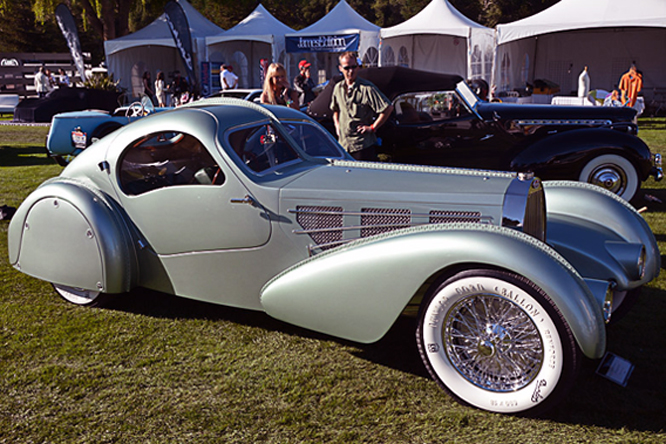
Not only did David want to recreate the car he wanted to do so using the same materials and tools that were available at the Bugatti factory in 1934/5. To undertake such a project David found someone to underwrite the project who not only had the astronomical bank balance required, but crucially also the same vision regarding the materials, tools and techniques to be used, in the form of Christopher Ohrstrom who amongst his other hobbies is chairman of the World Monuments Fund which aims to preserve architectural sites like Angkor Wat in Cambodia.
Once David had found a backer his next problem was to work out the original shape he was trying to recreate from just 11 black and white photographs and two drawings from the Bugatti Trust in the UK, one of the radiator grill and the other of a foot pedal.
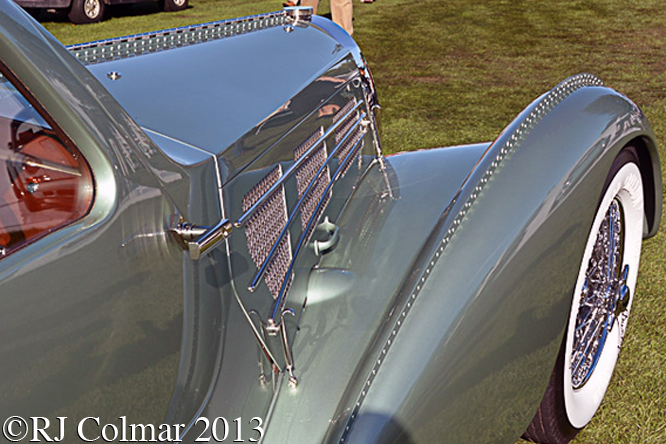
Eventually two more photographs were found and a set of drawings produced, safe in the knowledge that anything that did not look absolutely correct would be rejected and the part remade until it looked a perfect match to what could be discerned from the reference material.
The employees at The Guild of Automotive Restorers next had to find out all about working with magnesium alloy. Magnesium is thought to constitute around 11% of the earths naturally occurring minerals however the metal does not occur naturally rather it occurs in the form of salts.
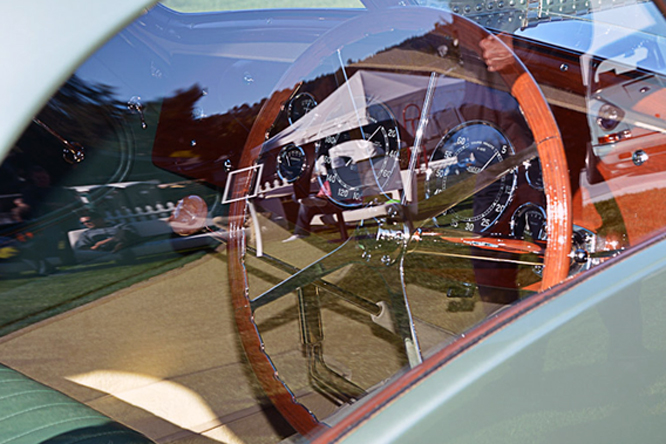
When it is liberated from salts by electrolysis it is incredibly light, extremely brittle, difficult to turn into compound shapes with an English Wheel, has a good memory for it’s original shape, is extremely reactive with other elements like oxygen and to make maters worse it melts at the relatively low 650 degrees centigrade has a high specific heat making it useful for fireworks and flares and reacts explosively with water !
It was deemed wise to be wearing something akin to a space suit when working with Magnesium alloy, blended with materials that make it a little less reactive and flamable or likely to erupt on contact with water.
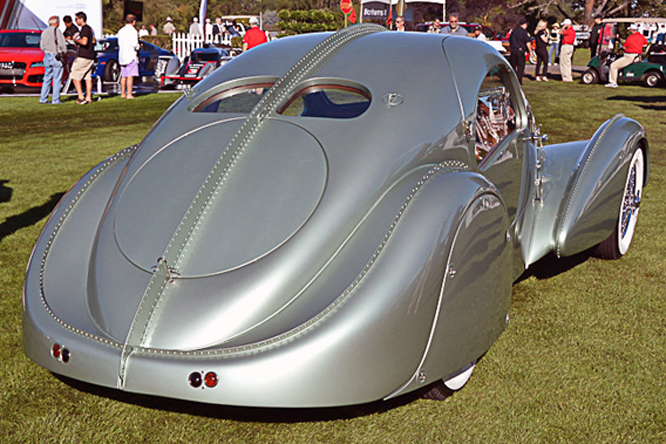
The curves were achieved by heating the material to between 850 degrees F and 1000 degrees F, before the alloy caught fire and then using the English Wheel in the time honoured manner. However for the most complex shapes smaller pieces were made and then riveted together with time sapping hidden rivets.
Preparation of the chassis required moving the engine back less than 4 inches so that the 3.3 litre 198.8 cui 8 cylinder motor could be mounted lower in the chassis as can be seen in the original photographs.
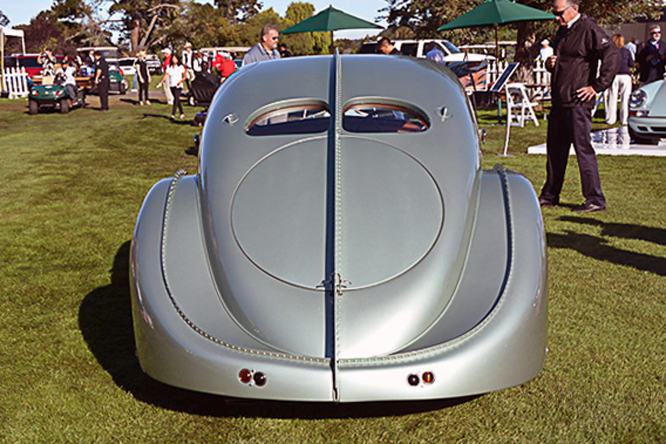
The interior details were partially available from a single photograph which showed a familiar Bugatti pattern to the dash instruments and interior equipment. The car was built as a show car rather than one to order so there is a logic to the conventional interior layout.
Most perplexing was the colour of the original car, it seemed unlikely that the original was silver as it appeared in the black and white photographs and this was confirmed through an interpreter when David met an ex Bugatti employee who told David that the car was known in the factory by the name “Creme de Menthe” or cream of mint. Some time later David acquired a painting of “Creme de Menthe” by one of the employees who had worked on it’s design and it also clearly showed the car was indeed Mint coloured, apt because silver were the German national racing colours and so would have been very out of favour in Alsace where it was built but also because magnesium is one of the constituents of chlorophyll, which of course give mint leaves, and all other green plants their pigment.
Finally David went to Goodyear and Goodrich who own the Dunlop brand an got permission to recreate the Dunlop logos on white rubber which was then vulcanised into groves cut into the inner and out walls of original Dunlop 90 series tyres so that they too appeared exactly as they had at the Paris Show.
My thanks to Geoffrey Horton for sharing today’s photographs of this magnificent vehicle which took well over 7000 hours to recreate.
Thanks for joining me on this “Creme de Menthe” edition of “Gettin’ a li’l psycho on tyres” I hope you will join me again tomorrow, when I shall be looking at a car painted up in tribute to one of Ayrton Senna’s sponsors. Don’t forget to come back now !
